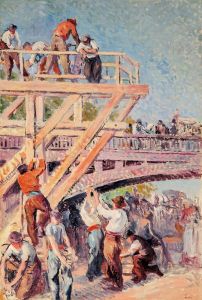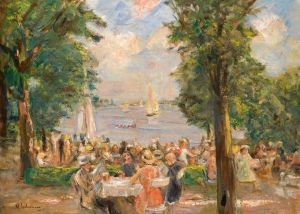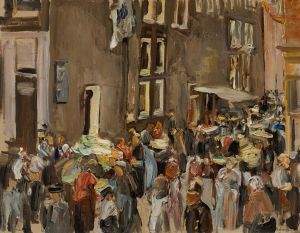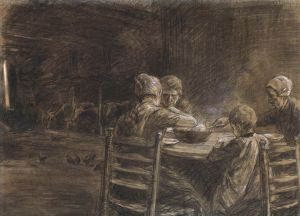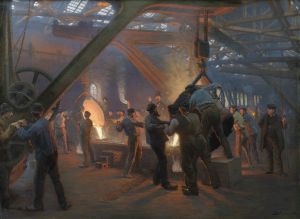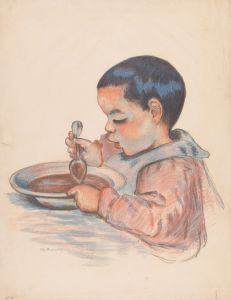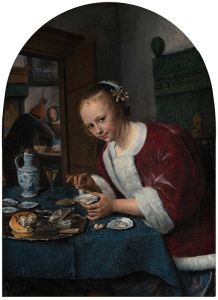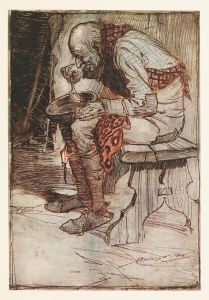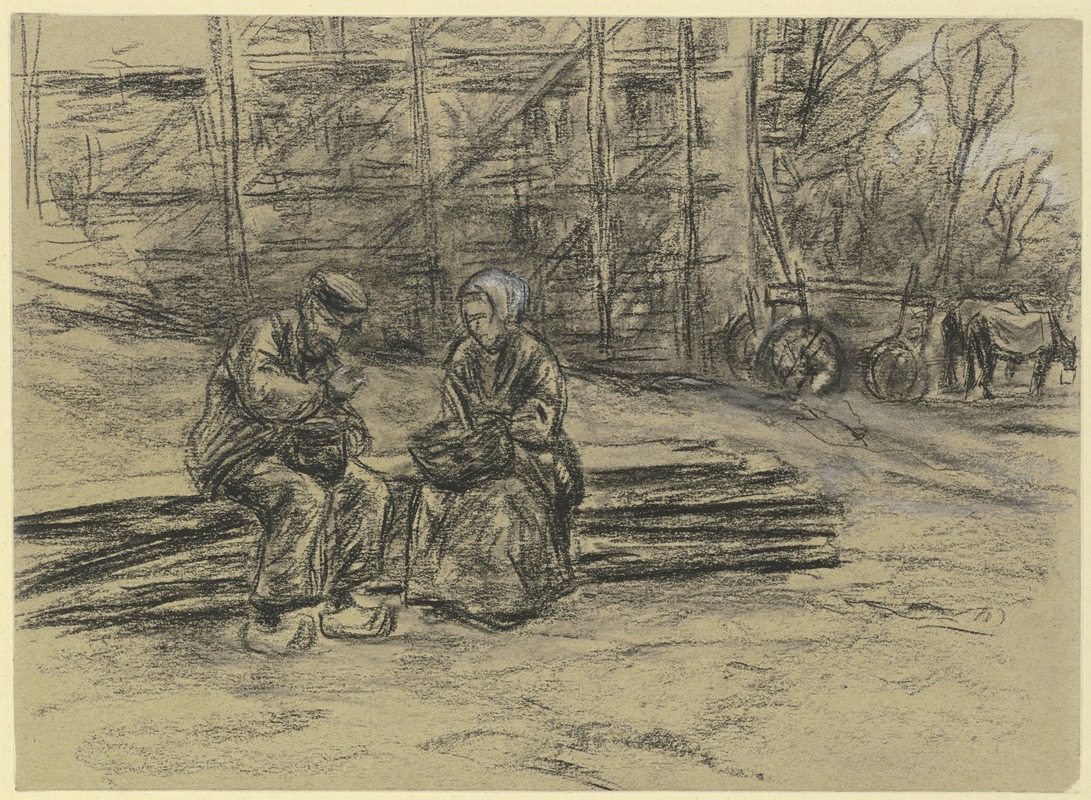
Arbeiter, sein Mittagbrot verzehrend
A hand-painted replica of Max Liebermann’s masterpiece Arbeiter, sein Mittagbrot verzehrend, meticulously crafted by professional artists to capture the true essence of the original. Each piece is created with museum-quality canvas and rare mineral pigments, carefully painted by experienced artists with delicate brushstrokes and rich, layered colors to perfectly recreate the texture of the original artwork. Unlike machine-printed reproductions, this hand-painted version brings the painting to life, infused with the artist’s emotions and skill in every stroke. Whether for personal collection or home decoration, it instantly elevates the artistic atmosphere of any space.
"Arbeiter, sein Mittagbrot verzehrend" (translated as "Worker, Consuming His Midday Meal") is a painting by the renowned German artist Max Liebermann. Created in 1887, this work is a significant example of Liebermann's commitment to realism and his focus on depicting the everyday lives of ordinary people, a theme that was prevalent in much of his oeuvre.
Max Liebermann (1847–1935) was a leading figure in the German art world and a pivotal member of the Berlin Secession, an art movement that sought to break away from the conservative academic standards of the time. Liebermann's work is often associated with the Impressionist movement, although he maintained a distinct style that emphasized realism and the portrayal of social themes.
"Arbeiter, sein Mittagbrot verzehrend" captures a moment of rest and sustenance, depicting a worker taking a break to eat his midday meal. The painting is characterized by its attention to detail and the use of light and shadow to create a sense of realism. Liebermann's brushwork and color palette reflect his interest in capturing the nuances of natural light and the textures of the worker's environment.
The subject matter of the painting reflects Liebermann's interest in the lives of the working class, a theme that was not commonly explored in the art of his time. By focusing on a solitary worker, Liebermann highlights the dignity and humanity of his subject, offering a glimpse into the daily life of an individual who might otherwise be overlooked. This focus on the everyday and the ordinary is a hallmark of Liebermann's work and aligns with the broader trends in 19th-century art, where artists began to explore themes outside of the traditional historical and religious subjects.
Liebermann's approach to this painting is indicative of his broader artistic philosophy. He believed in the importance of depicting life as it was, without embellishment or romanticization. This commitment to realism is evident in the way he portrays the worker, not as an idealized figure, but as a real person engaged in a simple, yet essential, human activity.
The painting also reflects the socio-economic context of the late 19th century, a time when industrialization was transforming the landscape of Europe and altering the lives of its inhabitants. By choosing to depict a worker, Liebermann acknowledges the changing social dynamics and the growing importance of the working class in the modern world.
"Arbeiter, sein Mittagbrot verzehrend" is housed in the Städel Museum in Frankfurt, Germany, where it continues to be appreciated for its artistic merit and its insightful portrayal of a moment in time. The painting remains an important work within Liebermann's body of work and serves as a testament to his skill as an artist and his empathy for the subjects he chose to depict.
In summary, Max Liebermann's "Arbeiter, sein Mittagbrot verzehrend" is a masterful example of 19th-century realism, capturing the essence of everyday life with sensitivity and precision. Through this painting, Liebermann not only showcases his technical prowess but also his deep understanding of the human condition, making it a significant piece in the history of art.





